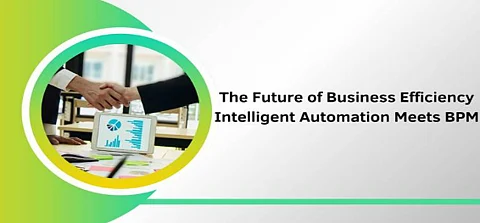

In an era where organizations are continuously seeking ways to streamline operations and enhance decision-making, the fusion of Intelligent Automation (IA) with Business Process Management (BPM) is reshaping business efficiency. Mohit Sachdeva, an expert in automation technologies, explores how these innovations are redefining enterprise processes by integrating advanced tools such as artificial intelligence (AI), machine learning (ML), and robotic process automation (RPA).
The synergy of Intelligent Automation (IA) and Business Process Management (BPM) empowers businesses to optimize efficiency and agility. BPM provides a structured framework for managing workflows, while IA enhances operations with automation, improving speed, accuracy, and adaptability. Automating repetitive tasks minimizes human effort, allowing employees to focus on strategic, high-value activities.
This integration not only reduces operational costs but also enhances scalability, enabling businesses to respond swiftly to market demands. By leveraging IA within BPM, organizations can streamline processes, eliminate bottlenecks, and drive continuous improvement, fostering innovation and sustainable growth in an increasingly competitive landscape.
The evolution of Intelligent Automation (IA) and Business Process Management (BPM) is moving toward hyperautomation—a strategy that integrates AI, ML, and RPA to automate complex decision-making processes. Unlike traditional automation, which targets specific tasks, hyperautomation spans entire workflows, enabling end-to-end automation. This approach allows businesses to implement autonomous decision-making, reducing manual interventions and enhancing operational agility.
By leveraging advanced analytics and AI-driven insights, hyperautomation optimizes efficiency, minimizes errors, and accelerates digital transformation. As organizations embrace this shift, they gain the ability to streamline processes, improve scalability, and drive innovation through intelligent, adaptive automation across diverse business functions.
Process intelligence is essential for maximizing automation benefits, leveraging advanced analytics and process mining to provide deep operational insights. These technologies identify inefficiencies, uncover patterns, and recommend optimizations, ensuring continuous improvement in automation efforts. By shifting organizations from reactive to proactive decision-making, process intelligence enhances efficiency, reduces costs, and drives business performance.
It enables enterprises to streamline workflows, eliminate bottlenecks, and adapt strategies based on real-time data. With a data-driven approach, businesses can make informed decisions, improve productivity, and stay competitive in an evolving market. Ultimately, process intelligence transforms operations, making automation smarter and more effective.
Integrating Intelligent Automation (IA) with Business Process Management (BPM) enhances more than just efficiency—it transforms customer experience. By seamlessly connecting front-end interactions with back-end operations, businesses can provide personalized, frictionless services. AI-driven automation powers real-time order processing, proactive customer support, and tailored recommendations, reducing wait times and boosting satisfaction. Automated workflows ensure faster issue resolution, while predictive analytics anticipate customer needs, fostering deeper engagement.
This integration not only streamlines operations but also strengthens brand loyalty, as customers receive responsive, customized experiences. Ultimately, IA-BPM empowers businesses to deliver superior service, setting new standards for customer-centric digital transformation.
Intelligent Automation in Business Process Management (IA-BPM) offers exceptional scalability, allowing businesses to evolve with changing demands. Cloud-based automation solutions provide the flexibility to expand or modify workflows without major infrastructure investments. This ensures that companies can swiftly adapt to growth, regulatory changes, or shifting market conditions.
Moreover, self-learning systems enhance adaptability by continuously analyzing data, identifying patterns, and adjusting operations in real-time. By leveraging AI-driven decision-making, businesses can proactively respond to disruptions, optimize resource allocation, and improve efficiency. This dynamic adaptability makes organizations more resilient to market fluctuations, ensuring sustainable growth and operational continuity.
With IA-BPM, enterprises can future-proof their processes, reduce downtime, and drive innovation, ultimately staying competitive in an ever-evolving digital landscape.
The AI generated models have become so accurate for the Intelligent Automation in Business Process Management (IA-BPM) that they are now trying to thrust behaviors such as self-optimizing and self-autonomous workflows. Self-correction, real-time compliance, and dynamic resource allocation for better efficiency have become their hallmarks. The latest dimension is collaborative intelligence, which means that it will enhance decision-making rather than replace it. Hence, businesses can have operational units with higher adaptability because much of the machinery- leaning automation is infused with human understanding. Subsequently, organizations respond optimally to challenges, the best use of their resources is maintained, and they keep all levels of compliance, with minimal manual intervention. If ever the future of IA-BPM is concerned, it is going to be with regards to balancing the efforts of AI to automation and leaving human oversight to spark the driving force behind innovations and growth sustainability.
In a world where Intelligent Automation and BPM are destined, businesses will have lives where even precision, agility, and customer focus will be superseded. Unlocking new avenues for productivity and innovation is possible through hyperautomation, process intelligence, and scalable automation frameworks. According to Mohit Sachdeva, therefore, the key to successful implementations lies in making them strategic, building a continuous process optimization paradigm, and ensuring seamless human-machine partnership. The future of the business and efficiency is here-it is intelligent.
